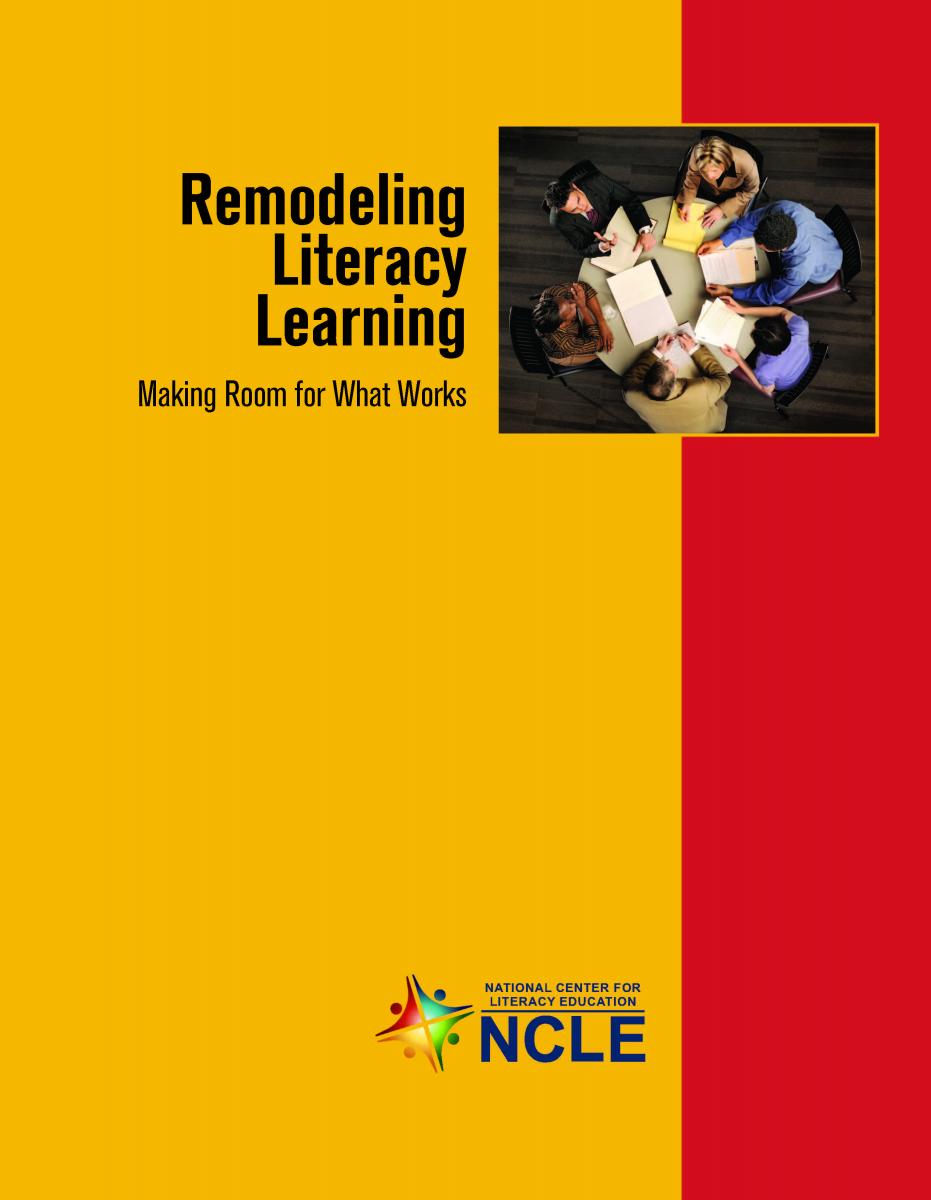Four Strategies to Remodel Literacy Learning
Communicator April 2013, Volume 36, Issue 8 The Common Core challenges educators to teach complex literacy skills across content areas. But according to new research, to meet that challenge, teachers need ongoing support from principals, especially when it comes to collaboration.
Communicator
April 2013, Volume 36, Issue 8
The Common Core challenges educators to teach complex literacy skills across content areas. But according to new research, to meet that challenge, teachers need ongoing support from principals, especially when it comes to collaboration.
“If we believe that developing student literacy is a shared responsibility, we must support educators as they learn, plan, and teach collaboratively,” says Kent Williamson, director of the National Center for Literacy Education (NCLE).
For NCLE’s report, “Remodeling Literacy  Learning: Making Room for What Works,” researchers surveyed over 2,400 educators across the country to investigate the connection between literacy and educators’ professional practices. The report outlined the basic “building blocks” for strong literacy support, which include: grade-level, subject-area, and data teams; digital tools to build professional online networks; opportunities for collaboration; use of student data to ground collaborative work; and inclusion of literacy coaches and librarians in collaborative teams.
Learning: Making Room for What Works,” researchers surveyed over 2,400 educators across the country to investigate the connection between literacy and educators’ professional practices. The report outlined the basic “building blocks” for strong literacy support, which include: grade-level, subject-area, and data teams; digital tools to build professional online networks; opportunities for collaboration; use of student data to ground collaborative work; and inclusion of literacy coaches and librarians in collaborative teams.
Beyond making sure these “building blocks” are in place, support literacy learning with these strategies.
Four Tips to Remodel Literacy Learning
Support teachers of all subjects—not just English language arts—in developing literacy skills. Educators from all roles, grade levels, and subject areas agreed that literacy is one of the most important parts of their job. “Principals as instructional leaders must know that educators in different content areas may use different approaches to teaching reading and writing based on their disciplines,” write the report’s authors. Facilitate professional development that allows educators of different subjects to learn from one another.
Prioritize PD around the Common Core and differentiated instruction. When asked to rank the literacy topics they want to learn about, educators chose Common Core, reading instruction, differentiated instruction, writing instruction, and content area literacy.
Structure the school day to allow for teamwork. Collaboration among educators is key to support a modern, multifaceted definition of literacy. But, the research found that the time educators spend working together is shrinking—a third of teachers reported that they had 30 minutes or less for collaboration. The study’s authors write: “Principals must courageously and judiciously rearrange school schedules to add collaborative time in teachers’ workdays so that they can support and hold each other accountable for reaching goals for themselves and for their students.”
Model collaborative practices. Reinforce a commitment to teamwork in your actions. “In fact, the principal actively modeling collaboration—walking the walk—was one of the factors most strongly correlated with high levels of trust in the school and of collaboration being practiced routinely,” write the authors. Shift evaluations and staff feedback to include recognition of teamwork and collaborative success. Share with parents the positive outcomes of collaborative efforts.
—Meredith Barnett, Associate Writer/Editor, NAESP
Copyright © 2013 National Association of Elementary School Principals. No part of the articles in NAESP magazines, newsletters, or website may be reproduced in any medium without the permission of the National Association of Elementary School Principals. For more information, view NAESP’s reprint policy.

